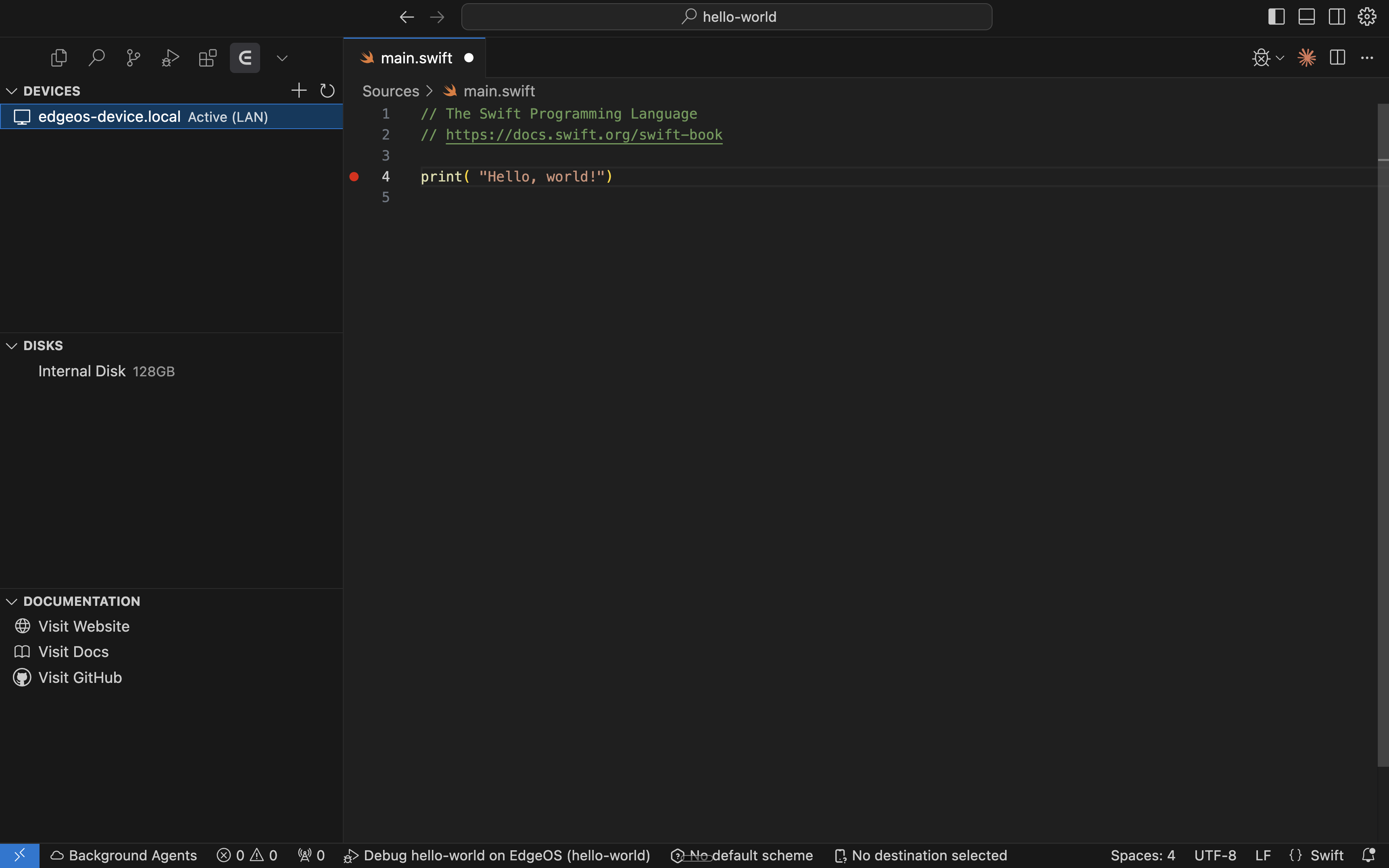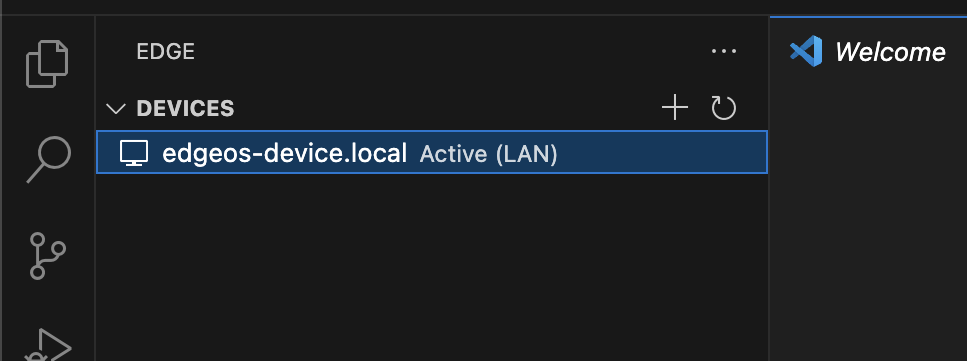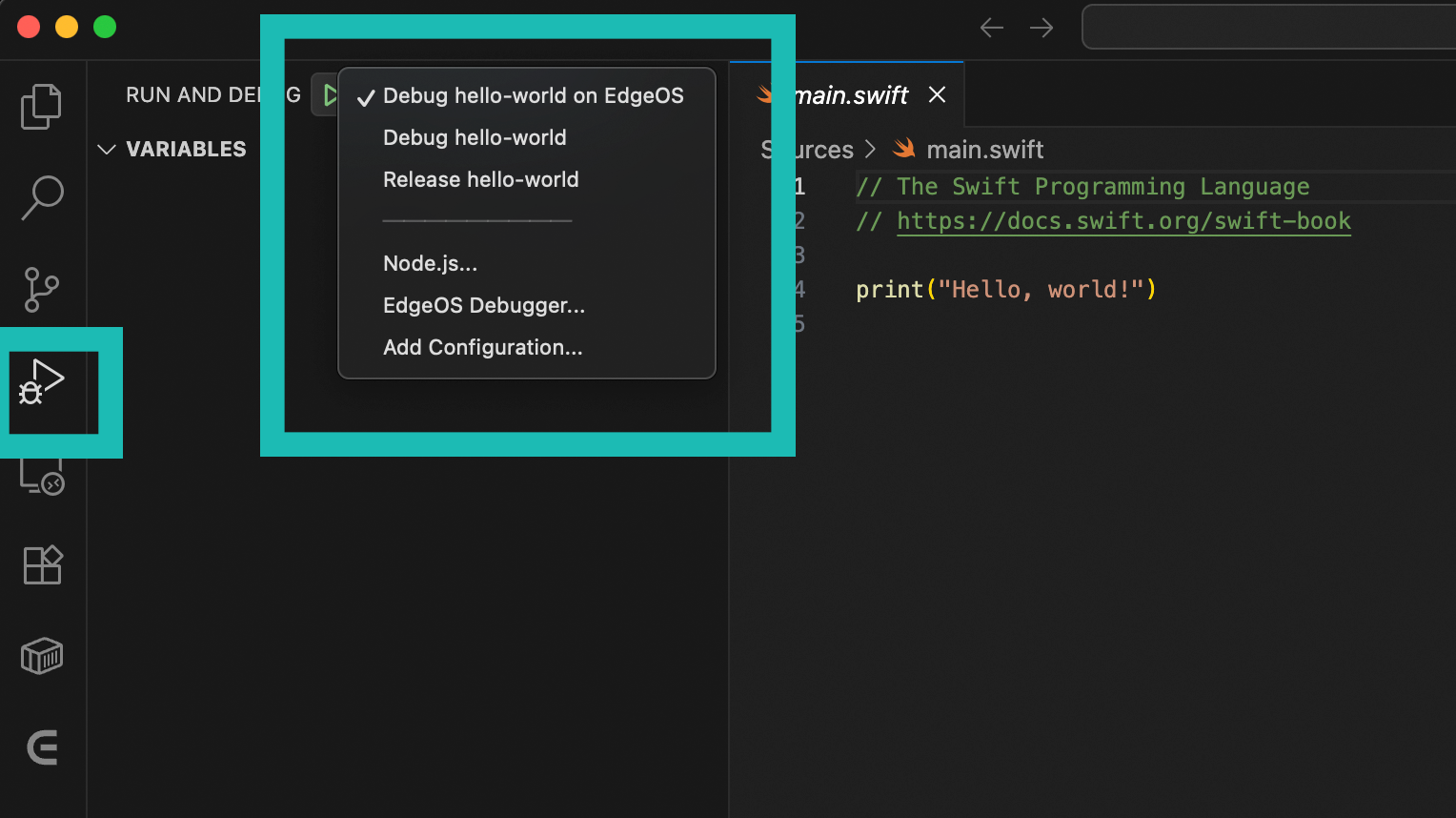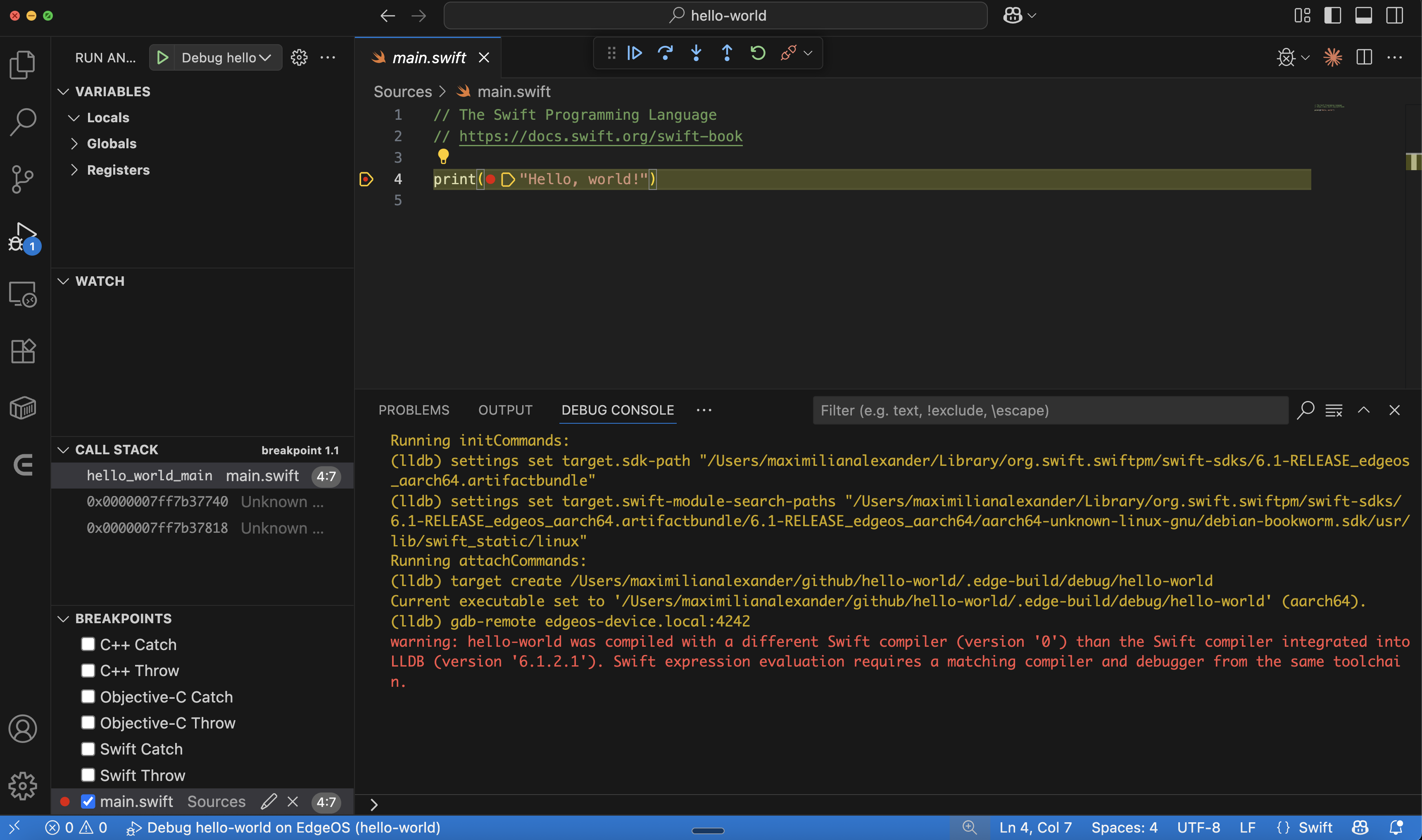Hello World
- We're going to assume that you already have your developer machine setup. If you don't, check out our developer machine setup guide.
- You'll need to make sure you have your EdgeOS device plugged into your computer and make sure that it's properly booted up. You'll know if it's properly booted up if you see device in your Edge VSCode Extension's "Devices" panel.
Step 1: Create a new project
macOS
mkdir hello-world
cd hello-world
edge initNow your favorite editor (we highly recommend VSCode, Cursor, or Windsurf with the Edge VSCode Extension) and open the project.
Step 2: Open the project in your favorite editor
macOS
code .
# or
cursor .
# or
windsurf .Step 3. Open the main.swift file
The edge init command will create a main.swift file for you. Open it in your favorite editor you should see the following code:
main.swift
// The Swift Programming Language
// https://docs.swift.org/swift-book
print("Hello, world!")Step 4: Set a breakpoint
Set a breakpoint in the main.swift file by clicking on the line number right next to the print statement.

Step 5. Select the EdgeOS device and make it active
In your Edge VSCode Extension, select the EdgeOS device and make it active.

Step 6. Run the application
Next navigate to the Debugger panel in the Edge VSCode Extension and select "Debug hello-wrold on EdgeOS" from the dropdown menu. and then click the green play button to "Run".
Alternative, you can just enter F5 to run the application. Take note that you might need to use fn+F5 on some keyboards.

Step 7. Check that breakpoint was hit
Give it a few seconds, to build, and ship your debug code to your EdgeOS device. Note, that it could be a little slower on devices like the Raspberry Pi Zero 2 W compared to the Raspberry Pi 5 or NVIDIA Jetson Orin Nano.

Congratulations! You've just built your first EdgeOS application and debugged it with breakpoints!